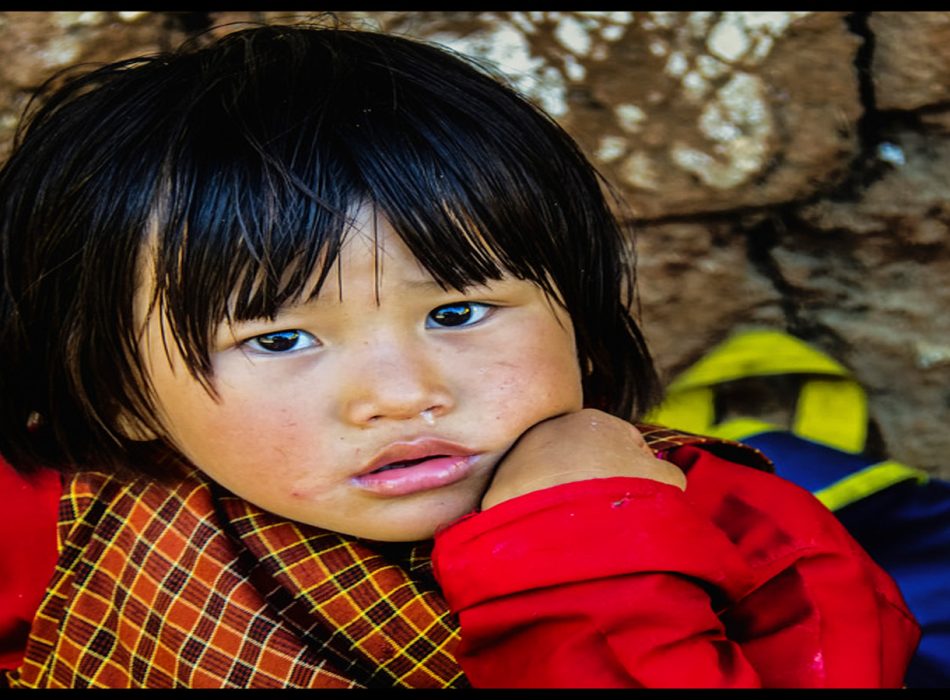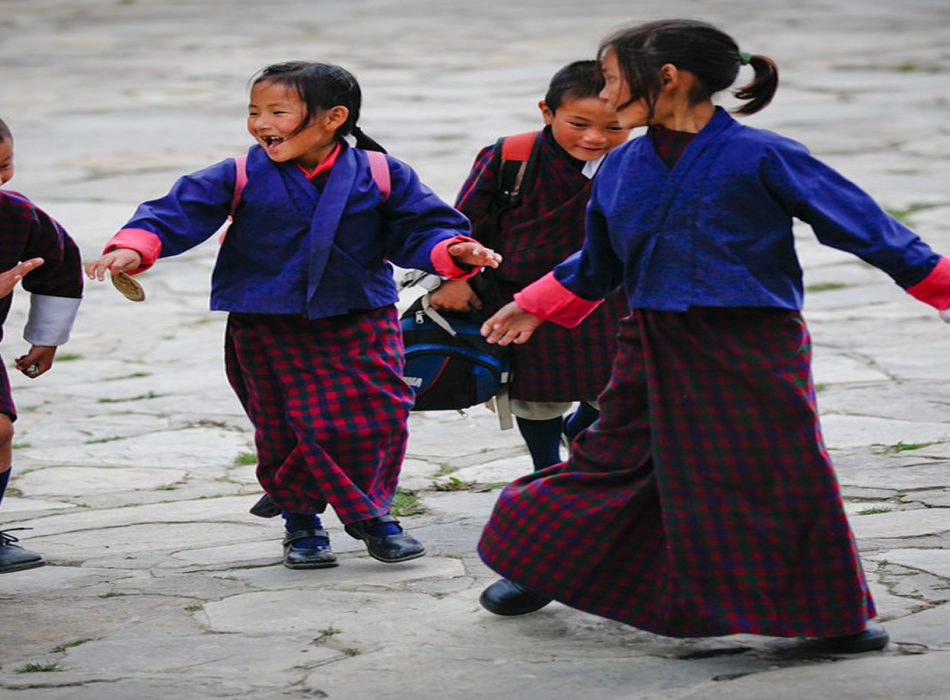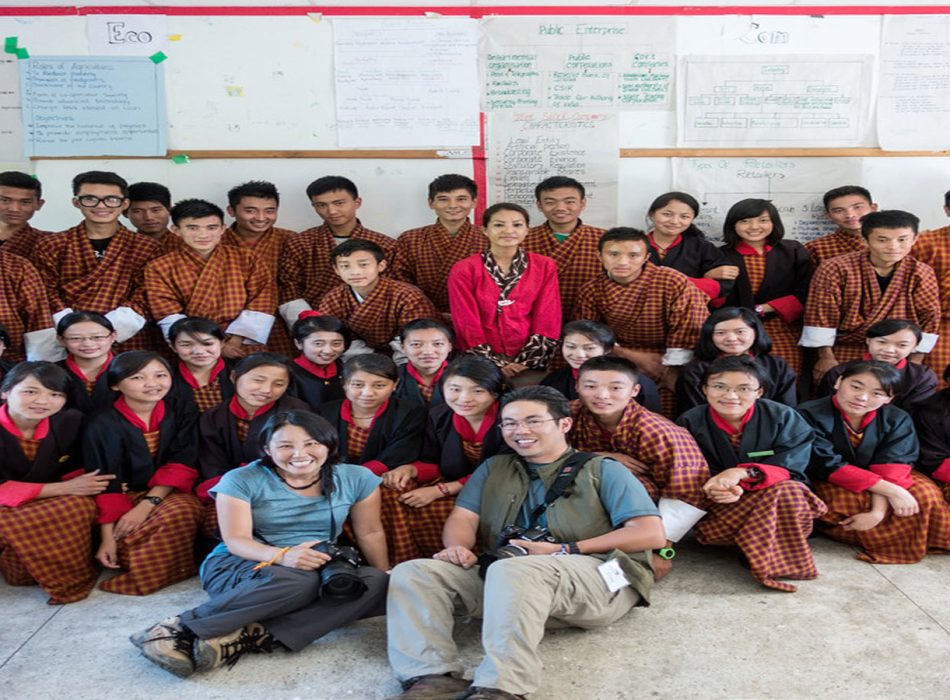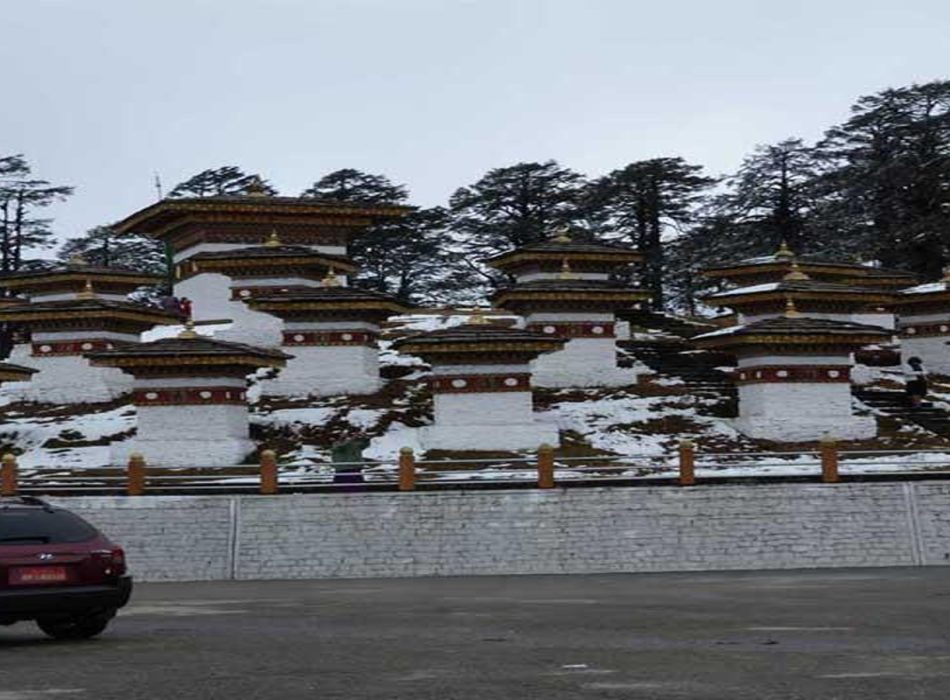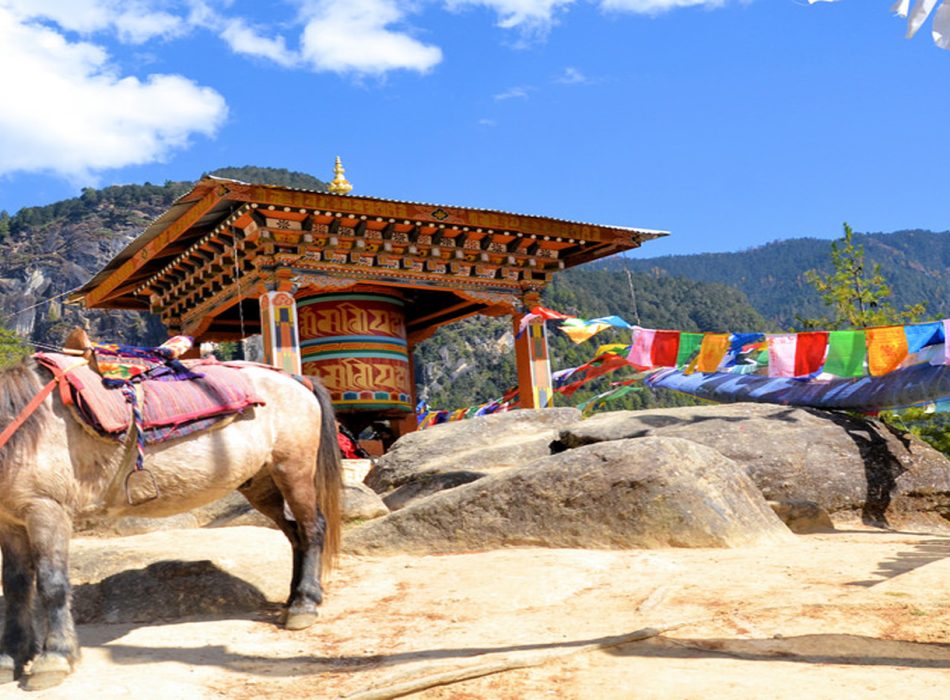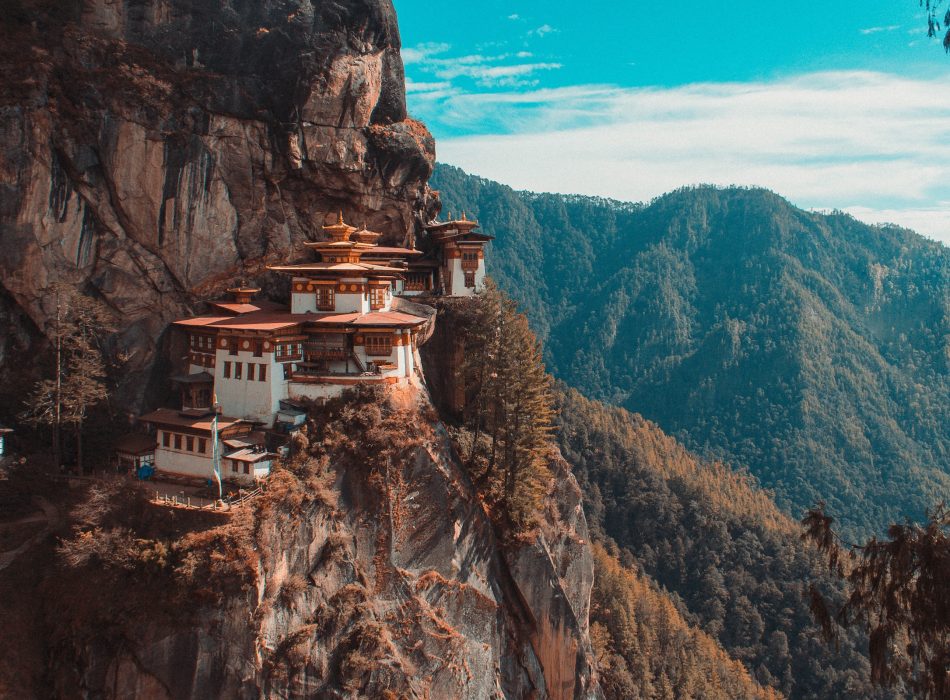Overview
9 Nights and 10 Days tour will cover till central part of Bhutan to one of the historical places, including Guru Padmasambhowa meditation body print to Terton Pema Lingpa treasure discovery. Apart from the site there will be also hiking and trail walk which will refresh you by nature.
| DEPARTURE / RETURN LOCATION |
Paro International Airport |
| DEPARTURE TIME |
Please arrive at least 2 hours before the flight. |
| SUITABLE MONTHS |
|
| INCLUDED |
- Land Transportation within Bhutan
- Tours specified in the itinerary
- Sustainable Development Fees (SDF)
- Three star hotel accommodation (Government approved 3 stars and above)
- Meals (breakfast, lunch, dinner, tea/conee with snacks as and when required)
- Rooms on Twin Sharing basis
- Experienced and English-speaking licensed guide
- All necessary permits for entering Dzongs, Monasteries, Monuments
- Mineral water on long trips.
- Full service & assistance before, during and after your Bhutan trip
|
| EXCLUDED |
- Airfare
- Monument fees and other special entry fees
- Beverages of any kind
- Personal Shopping
- Laundry
- Tipping
|
Day 1: Arrive Paro International Airport
After immigration and customs formalities, you will be received by the representative of Charisma Bhutan Tours & Treks.
-
After checking into your hotel and refreshment you will visit Paro Rinpung Dzong (fortress), built in 1645 to defend the valley against Tibetan invaders. From the Dzong you will walk down to Rimpung Bridge (Traditonal Cantilever Bridge), oldest bridge in Bhutan.
-
Ta Dzong (National Museum)
-
In the evening drive up the Paro valley to visit Drukgyel Dzong (in ruins), 18 km. from Paro town on the north side of the valley.It was built in 1649 to commemorate the victory of Bhutanese over allied Tibetan.
Overnight at a hotel in Paro.
Day 2: Paro-Punakha
After breakfast, you will travel to Punakha & Wangdue which will take you through Chunzom (confluence of Pachu- the river flowing through Paro valley & Wangchu –the river flowing through Thimphu valley).
-
On the way, visit Tachog Lhakhang (temple) , this 14th century temple located on the base of a mountain across the Pa chu on the Paro-Thimphu highway, is a must visit temple in the Paro valley.
-
At Dochula Pass you will see the beautiful Himalayan ranges and 108 chortens (stupa) built on the hill by Ashi Dorji Wangmo Wangchuck (the Queen Mother of Bhutan) for the security and well being of His Majesty, the King of Bhutan.
-
Visit Druk Wangyal Lhakhang (temple) .The temple was built to honor His Majesty Jigme Singye Wangchuck (the 4th King of Bhutan).
-
Visit the Devine Madman’s Monastery-Chhimi Lhakhang, famously known for its fertility shrine, where one can receive a special fertility blessing.
-
After lunch visit the Punakha Dzong, located on the island of the Pho – Chu (male river) and the Mochu (female river).
Overnight at a hotel in Punakha.
Day 3: Punakha-Trongsa-Bumthang
After breakfast, drive to Bumthang through Trongsa.The drive will take you through dense forests of oak and blue pine trees and through the subtropical vegetation. Lunch and refreshments will be served enroute.
-
On arrival at Trongsa, you will visit National Museum which is housed in the Ta Dzong (watch tower).A museum in which aspects of Bhutanese culture and history are explained by beautifully objects.
-
After that you will continue your journey to Bumthang passing through Yotong La Pass.
-
Just before reaching Bumthang you will come across “Yathra” Weaving Centre at Zugney Village where you will see local weavers weaving Yathra. Yathra is the name for the colorful, hand-woven woolen cloth (often with geometric designs) that is produced in this region and wool used for this type of textile is sheep wool as the sheep is reared in this Bumthang Valley. Yathra is made into jackets or bags, etc.
On arrival at Bumthang, check into your hotel.
Overnight at a hotel in Bumthang.
Day 4: Bumthang Sightseeing
After breakfast, visit the following:
-
Jambay Lhakhang, built in the 7th century by the King Songtsen Goempo of Tibet. In his effort to propagate Buddhism he had a plan to build a total of 108 temples in Tibet and neighboring kingdoms.
-
Kujey Lhakhang (Kujey means, “Body imprint”). The temple to the right is the oldest and was built by Minjur Tempa in 1652. It was built around the cave in which Guru Rimpoche meditated and left his body imprint.
-
Jakar Dzong, “castle of the white bird”. According to legend, when the lamas assembled in about 1549 to select a site for a monastery, a big white bird rose suddenly in the air and settled on a spur of a hill. The fortress is now used as an administrative center of the valley and summer residence of Trongsa monks.
-
Tamshing Lhakhang: This temple is also known as Tamshing Lhendrup Chholing (Temple of the Good Message). In the evening stroll around the beautiful landscape of the Bumthang Jakar valley
-
After lunch drive to Mebar Tsho (Burning lake) and visit the lake and then drive back to your hotel and in the evening you may wish to stroll around the beautiful landscaped gardens of Bumthang.
In the evening you may wish to stroll around the beautiful landscaped gardens of Bumthang.
Overnight at a hotel in Bumthang.
Day 5: Bumthang- Phobjikha Valley
After breakfast, drive to Punakha via Phobjikha valley. Driving through the dense forests of the Phobjikha Valley you arrive atGantey village where you see the Gangtey Monastery and visit the monastery.
-
Phobjikha valley is part of the beautiful Jigme Singye Wangchuck National Park (formerly known as Black Mountains National Park), one of Bhutan’s most important nature sanctuaries. Each winter it is home to a flock of 300 rare and endangered black-necked cranes. The surrounding hills and mountains are home to nomadic shepherds and yak-herders. This is one of the most remote and untouched regions in Bhutan and is only just opening its doors to the outside world.
After lunch at Phobjikha valley and explore the valley and also visit the Black Necked Crane Center.
Then drive onto Wangdue.
Overnight at a hotel in Wangdue.
Day 6:Punakha/Wangdue-Thimphu
After breakfast you will be driven to Thimphu and after lunch visit the following:
-
Centenary Farmers’ Market (open from Thu-Sun only): Most of the Thimphu’s population and many valley dwellers converge on the bustling weekend market, held by the side of Wangchu River.
-
Takin Preserve, which houses the national animal the Takin that is only found in Bhutan. This is an extremely rare member of the goat family. They live on a diet of grass and bamboo. It can weigh as much as 550 pounds.
-
Watch Archery match ( Bhutan’s national game)
-
Tashichhoe Dzong, a fortress of the glorious religion. It was built in 1641 by Zhabdrung Ngawang Namgyel and was reconstructed into present structure by the late King, His majesty Jigme Dorji Wangchuck in the year 1962-1969. It houses the secretariat building, the throne room and the office of the king, and the central monk body.
-
The National Memorial Chorten (stupa) which was constructed in 1974 as a memorial for the third King of Bhutan, King Jigme Dorji Wangchuck, who is widely regarded as the father of modern Bhutan.
-
Craft Bazaar where craftsmen and artisans from across the country display and sell their handicrafts.
Overnight at a hotel in Thimphu.
Day 7: Thimphu sightseeing & Short Hike to Tango Monastery
After breakfast visit the following:
-
Traditional Bhutanese paper making factory. The handmade paper making in Bhutan stemmed from the age-old tradition originated in 8th century of Bhutanese history. The handmade paper constitutes as valuable National heritage of Bhutanese cultural identity and is preserved through all the ages.
-
National Textile Museum which is a good place to see the art of traditional weaving being kept alive and preserved through exhibition and has a good collection of old textiles which are rich in colors and designs.
-
School of Traditional Painting of Arts and Crafts where students undertake a six-year course on the 13 traditional arts and crafts of Bhutan.
-
After lunch hike to the base camp of Tango Monastery and hike up to the Monastery. The walk up to the Monastery is through the forest filled with Rhododendron flower trees which will be in full bloom during April month. Tango Monastery is the center for higher studies for monks. The view from Tango Monastery is breathtakingly beautiful.
Overnight at a hotel in Thimphu.
Day 8: Thimphu-Haa to Valley-Paro
After breakfast travel to Haa valley (the valley of Guardian Spirit) through the stretch of villages of Dogakha, Susuna and Jabana.
-
Visiting typical Bhutanese farmhouses along the way where you will be treated to typical Bhutanese hospitality with local wine and butter tea with snacks (mostly roasted rice).You will also witness farmers working in their farms.
-
Then continue your journey to Haa valley and you stop for lunch before making your way to either Lhakhang Karpo (White Temple) or Lhakhang Nagpo (Black Temple) or both depending on your interest.
-
Then you will continue your journey to Paro driving you through winding road along the side of the mountain and you will make the climb to the Chele La Pass, 3822 metres high, with spectacular glimpses of the Bhutan Himalayas all the way. After crossing the Chilela Pass the journey will take you through farmlands and scattered hamlets and finally to Paro Valley.
Overnight at a hotel in Paro.
Day 9: A Day Hike to Taktsang Ghoempa (Tiger’s Nest Monastery)
After breakfast drive to base, hike up to Taktsang Monastery, also known as ‘Tiger’s Nest’.
-
Taktsang (Tiger’s Nest Monastery), it is said that in the 8th century Guru Rinpoche flew on the back of a tigress from eastern Bhutan to this place and meditated in a cave here for 3 months. The principal Lhakhang (monastery) of the present monastic complex dates from 1692.
-
On the way visit Kyichu temple,one of the 108 temples built in the 7th century by the Tibetan King Songsten Gampo. The story goes that a giant demon lay across the whole area of Tibet and the Himalayas and was preventing the spread of Buddhism. To overcome her, King Songtsen Gampo decided to build 108 temples, which would be placed on all the points of her body.
In the evening you can relax in the Traditional Bhutanese Hotstone bath.
Overnight at a hotel in Paro.
Day 10: Paro Departure
In the morning after breakfast your tour guide and driver from Charisma Bhutan Tours & Treks will escort you to the Paro airport for your flight to your onward destinations.


